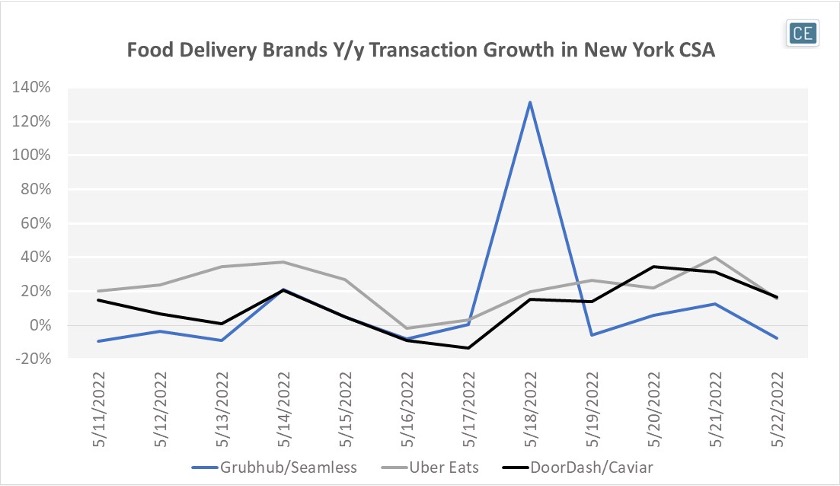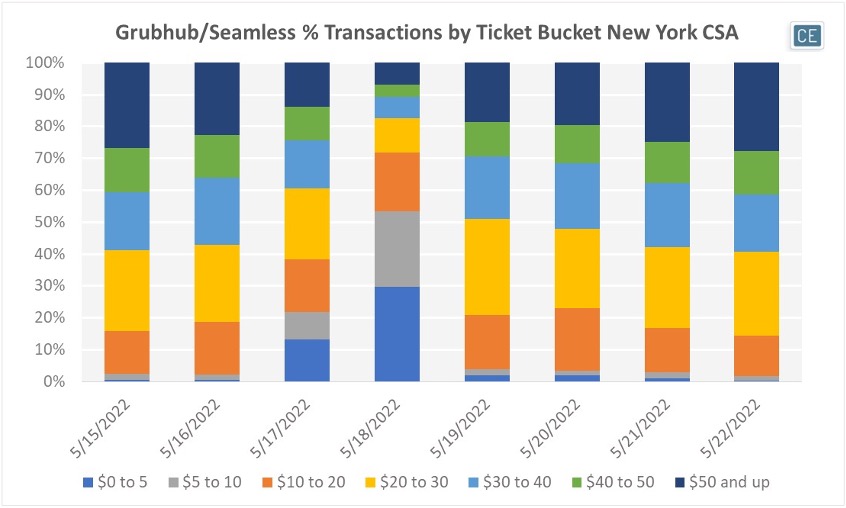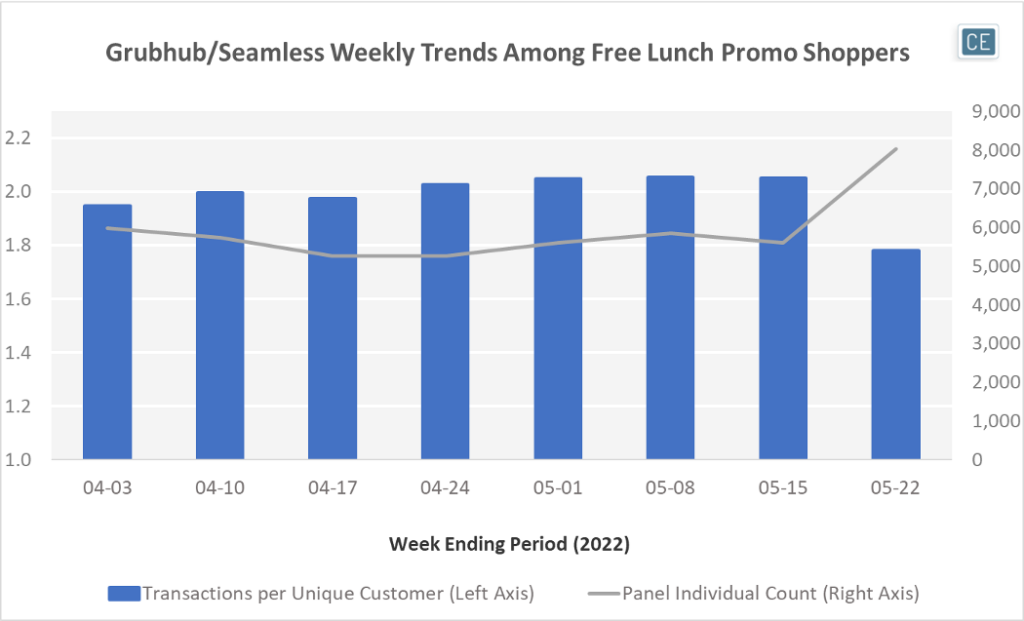
In mid-May, food delivery service Grubhub and its subsidiary Seamless offered a “free lunch” promotion in the NYC area, giving diners $15 off orders between 11AM and 2PM. Many reports labelled the promotion a logistical disaster, citing customer complaints of long wait times and cancelled orders due to overwhelmed restaurants and drivers. But did it drive sales? In today’s Insight Flash, we use our unique ability to see the actual day a transaction was charged to a user’s payment card in order to examine behavior in the NYC CSA during the promotion.
Throughout the week before and the week after the promotion, Grubhub/Seamless trailed its major competitors in transaction growth. The day purchases were charged for the promotion, however, Grubhub/Seamless saw a 131% jump in the number of transactions, versus only 20% for Uber Eats and 15% for DoorDash/Caviar (although the free lunch promotion was on 5/17, most credit cards weren’t charged until 5/18). For Grubhub/Seamless, the average daily transaction growth the seven days before had been flat at 0%.
Transaction Growth

There may be no such thing as a free lunch, but Grubhub/Seamless customers got close. Even with total order value, fees, tax, and tip, 30% of orders charged on 5/18 were under $5 – and this includes later dinner orders! 24% of transactions were between $5-10. Although the promotion was generous, it does seem like many customers paid for add-ons.
Ticket Buckets

A key question for any promotion is – did this cannibalize full-priced sales? Did Grubhub/Seamless customers order an extra lunch during the week of the promotion, or did they substitute a lunch they would have normally paid full price for? Looking specifically among those who took advantage of the free lunch promotion, about 70% of them each week had made a purchase from Grubhub/Seamless in the seven weeks prior. This means that the company saw a lift of about 40% in weekly users among this group. However, total transactions only rose 25%, and spend was flat. This implies that there was likely some level of cannibalization and cherrypicking the promotion. However, another important question is whether the promotion will lead to future engagement. For that, users will have to keep monitoring our data to see the impact.
Weekly Transactions

To learn more about the data behind this article and what Consumer Edge Research has to offer, visit www.consumer-edge.com.







Sign up to receive our stories in your inbox.
Data is changing the speed of business. Investors, Corporations, and Governments are buying new, differentiated data to gain visibility make better decisions. Don't fall behind. Let us help.













Sign up to receive our stories in your inbox.
Data is changing the speed of business. Investors, Corporations, and Governments are buying new, differentiated data to gain visibility make better decisions. Don't fall behind. Let us help.





